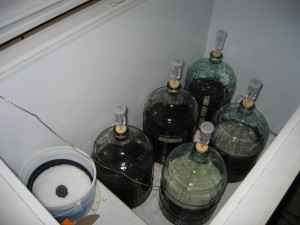 OK, I usually start the beer news roundup with a listicle, and — as you might expect — this week there were plenty of them. Every media outlet in the world seemingly wanted to publish a St. Patrick’s Day beer list. I decided to skip them, because you can just search for “St. Patrick’s Day” and check the endless news results. Also, I suspect that homebrewers more than anyone know what beers they’d like to drink on this holiday.
OK, I usually start the beer news roundup with a listicle, and — as you might expect — this week there were plenty of them. Every media outlet in the world seemingly wanted to publish a St. Patrick’s Day beer list. I decided to skip them, because you can just search for “St. Patrick’s Day” and check the endless news results. Also, I suspect that homebrewers more than anyone know what beers they’d like to drink on this holiday.
Beer News (March 10-March 16)
Kräusening (Part 1 of 3)
Running a lager fermentation is, in many ways, similar to conducting the fermentation of an ale. The key differences are that you need to pitch more yeast, ferment at a cooler temperature, and cold-condition (lager) the beer after primary fermentation. In addition, sometimes you need to alter the conditions near the end of fermentation to produce a quality beer. Specifically, many lager strains will not adequately clean up the residual diacetyl (and other fermentation byproducts) if they are simply left to finish at their recommended fermentation temperature. For most homebrewers (and many commercial brewers), the solution is to employ a diacetyl rest. Near the end of fermentation, the fermentation temperature is allowed to rise into the low end of the ale fermentation range. The beer is held at that temperature until the diacetyl is gone. Commercial breweries test for this; most homebrewers simply let the beer sit on the yeast for about 3 days, at around 60 °F (16 °C), which is usually long enough.
There is another way to finish off a lager fermentation, however — by kräusening it. In this three-part article, I’ll discuss kräusening and one option that arises when you employ it — the ability to cap the tank and carbonate your beer from CO2 generated in late fermentation.


Recent Comments